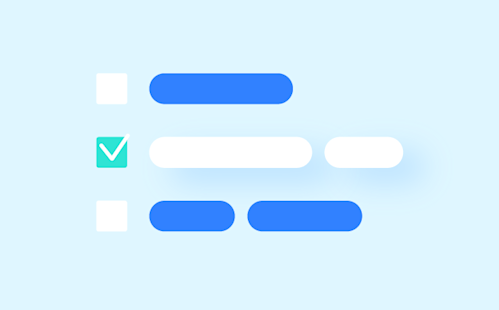
Release plan template
Discover it live
Preview

What is a release plan template?
Trying to cram all requested features into one large project can result in a huge mess — that’s why product teams break projects down into stages, called releases.
A release plan is used by product teams to visualize a detailed roadmap for features, improvements, and bugs that will be built in the near future. It schedules how and when a certain feature or functionality will be delivered to users. The time horizon is more short-term compared to most other roadmap types — in most cases, a release plan visualizes 6-12 weeks or 2-4 sprints.
Our release plan template is designed specifically for such cases. Check it out yourself!
What elements are needed for a release plan template to work?
There is no one approach to product management. Release guidelines will never be set in stone and, for that reason, every company will need to tweak a release plan template based on the product’s specific needs.
That said, the general elements will be:
Dates of proposed release(s)
Plans for each product release
Subsequent iterations for the release(s)
Plans for each iteration
Feature development within an iteration
What release on what date(s) will contain each enhancement or feature that rolls up into a roadmap outcome?
It’s essential for your plan to be nimble — adapting to changes quickly as new data and feedback become available. The airfocus release plan template lets you do just that, without any wasted time.
How do you create a successful product release plan?
Step 1: The very first thing to do is to set up the vision for your product. All subsequent decisions will be based on this: initiative/opportunities prioritization, how to allocate resources and workloads, how to adapt on the go. Make sure your product vision aligns with the market and organizational objectives. You may want to consult with senior executives and other stakeholders to get this step right.
Step 2: Review the product backlog to estimate the importance of initiatives. Map out user stories based on the input from stakeholders and the vision of the product. Here, you should also prepare a draft of a release plan that includes the release goal, dates, and ranked user stories.
Step 3: Organize a release plan meeting. As soon as the product vision and release plan are outlined, it’s time to get stakeholders up to speed and collect their feedback, to make sure you’re all on the same page. When changes do need to be made, our release plan template is quick and easy to update — that way, you can make as many tweaks as required to agree on a common view of the strategy or collaboration.
Step 4: Based on the results of the meeting, set the dates, sum up the results, make final adjustments, and share the final version of the release plan with everyone. It’s crucial for everyone to keep informed of the latest updates.
Crafting comprehensive release plans can become a game-changer in product development. Our release plan template will become a solid foundation (while saving you a great deal of tedious work).
Product release plan template best practices
Product and development teams will be the main audience of your release plan. This document is less relevant to executives and external stakeholders because it provides a higher level of detail. But you should still get their input at the start of the process!
When deciding what items make it into your release plan, you might want to consider customer value, strategic fit and the complexity of building it.
Leveraging our product release plan template speeds up the process, sets everything straight, and optimizes many internal processes!
Set up clear expectations based on the real data (that keeps stakeholders happy and product development teams working to a realistic goal).
Upgrade your release planning with the airfocus product release plan template today.
Get started with the release plan template now

Pre-installed apps
Priority Ratings
Set up a custom prioritization framework
Benefits that come from using this template
Powerful prioritization framework
Build a strategic product roadmap
Seamless integrations
Ready to use & fully customizable
Learn how to use airfocus templates effectively
More templates
Experience the new way of doing product management


Experience the new way of doing product management




